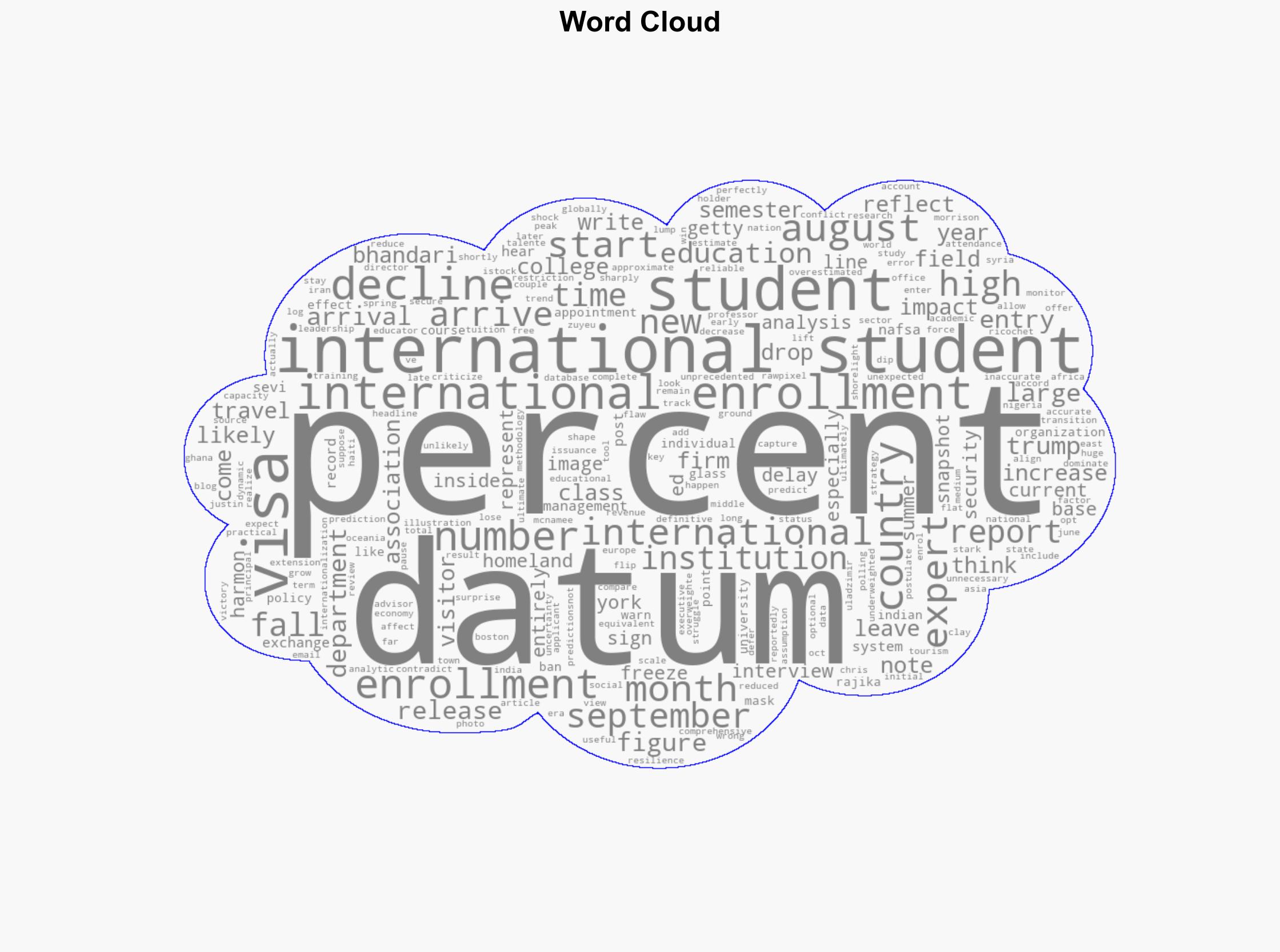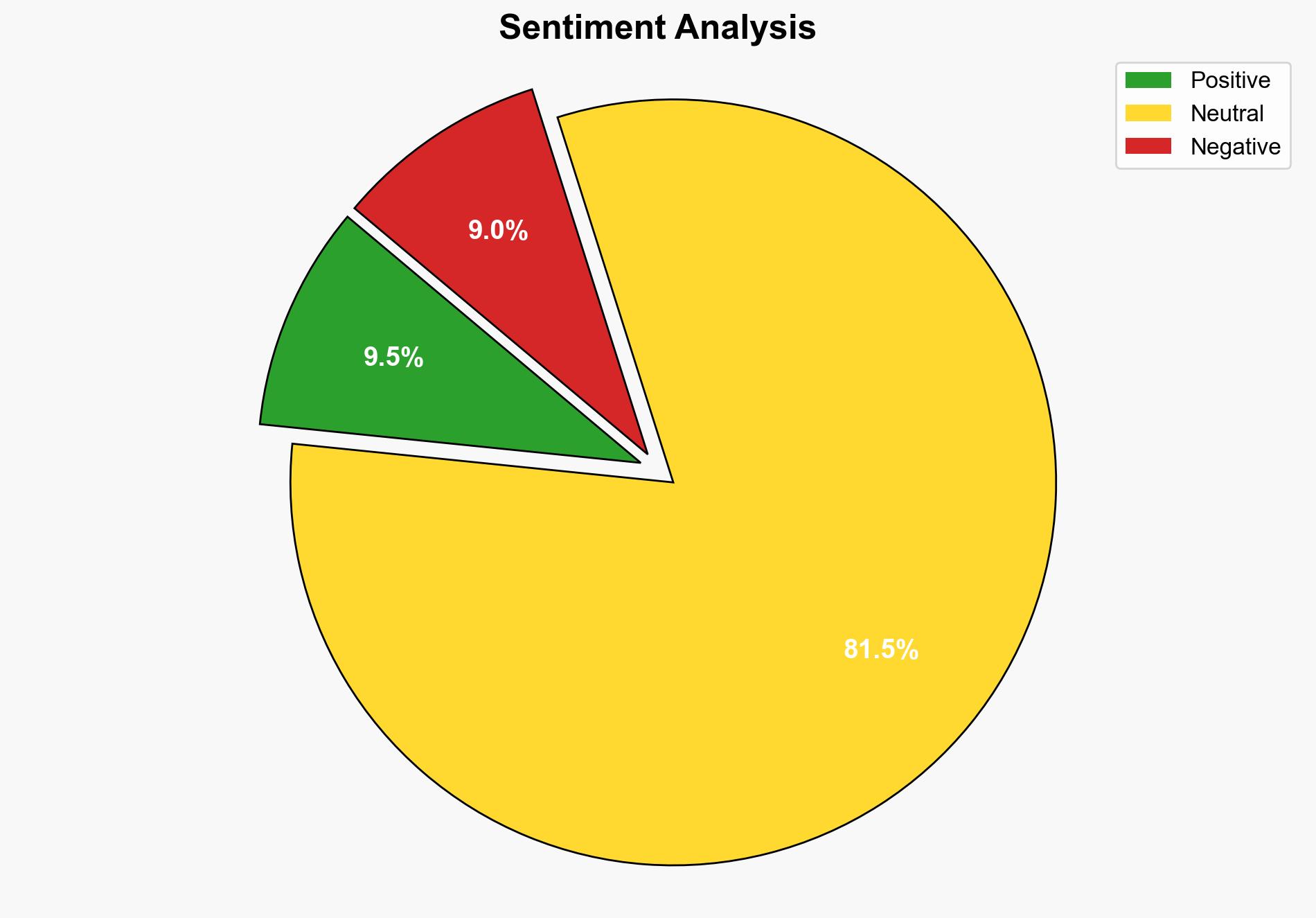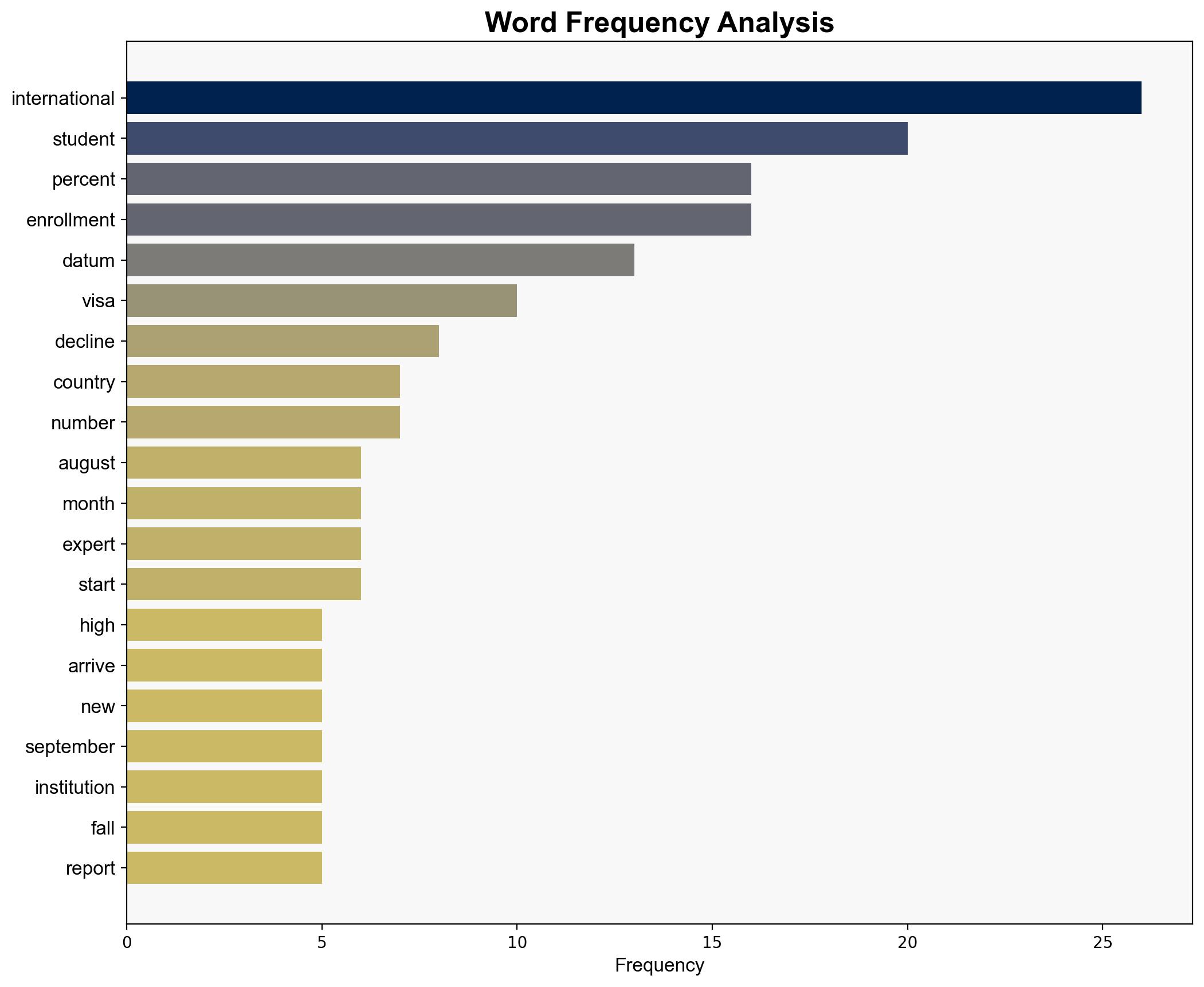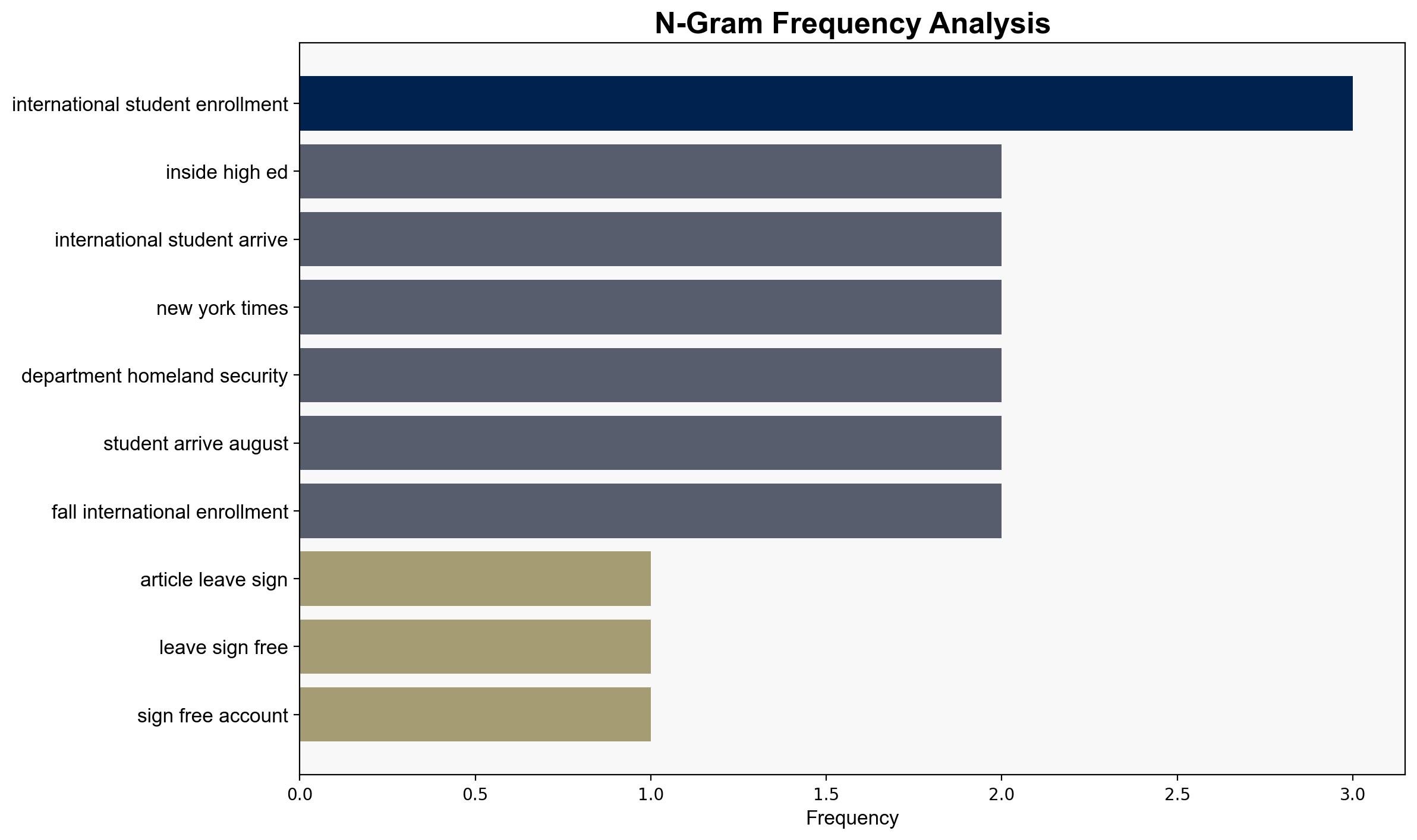International Student Arrivals Drop 19 – Inside Higher Ed
Published on: 2025-10-07
Intelligence Report: International Student Arrivals Drop 19 – Inside Higher Ed
1. BLUF (Bottom Line Up Front)
The most supported hypothesis suggests that the decline in international student arrivals is primarily due to visa processing delays and policy changes, rather than a significant drop in interest or enrollment. Confidence in this assessment is moderate due to conflicting data and the lack of comprehensive visa issuance statistics. It is recommended to improve data collection and analysis on international student trends to better inform policy decisions.
2. Competing Hypotheses
Hypothesis 1: The decline in international student arrivals is primarily due to visa processing delays and policy changes, including temporary freezes on visa interviews and increased scrutiny of visa applicants.
Hypothesis 2: The decline reflects a genuine decrease in interest among international students due to geopolitical tensions, perceived unwelcoming policies, and the impact of the COVID-19 pandemic.
Using the Analysis of Competing Hypotheses (ACH) 2.0, Hypothesis 1 is better supported by the available data, including reports of visa processing delays and the temporary freeze on visa interviews. Hypothesis 2 lacks direct evidence and is primarily based on broader geopolitical assumptions.
3. Key Assumptions and Red Flags
– Assumption: Visa delays are the primary cause of the decline, assuming that interest in U.S. education remains stable.
– Red Flag: Lack of comprehensive visa issuance data creates uncertainty.
– Blind Spot: Potential underestimation of geopolitical factors affecting student decisions.
– Cognitive Bias: Overreliance on anecdotal reports from educational institutions.
4. Implications and Strategic Risks
The decline in international student arrivals could have significant economic implications for U.S. universities and local economies reliant on student spending. There is a risk of long-term reputational damage to the U.S. as a preferred destination for international education. Additionally, reduced international student presence may impact cultural exchange and innovation.
5. Recommendations and Outlook
- Enhance data collection on international student trends, including visa issuance and enrollment statistics.
- Engage in diplomatic efforts to reassure international students and their families about the U.S. commitment to international education.
- Scenario Projections:
- Best Case: Visa processing issues are resolved, and international student numbers rebound.
- Worst Case: Continued decline leads to significant financial strain on educational institutions.
- Most Likely: Gradual recovery as visa processes normalize, but geopolitical tensions remain a concern.
6. Key Individuals and Entities
– Clay Harmon, Executive Director, Association of International Enrollment Management
– Chris Glass, Professor, Boston College
– NAFSA: Association of International Educators
7. Thematic Tags
international education, visa policy, economic impact, geopolitical tensions




